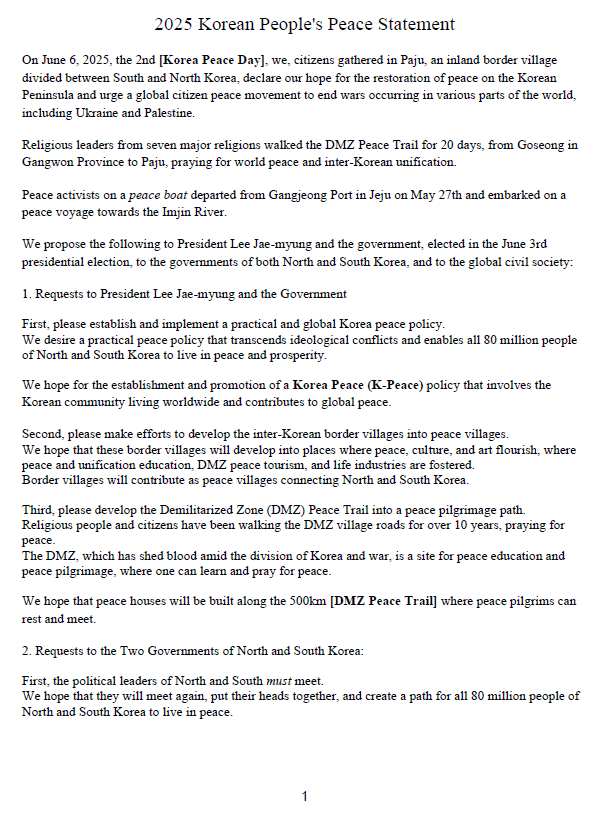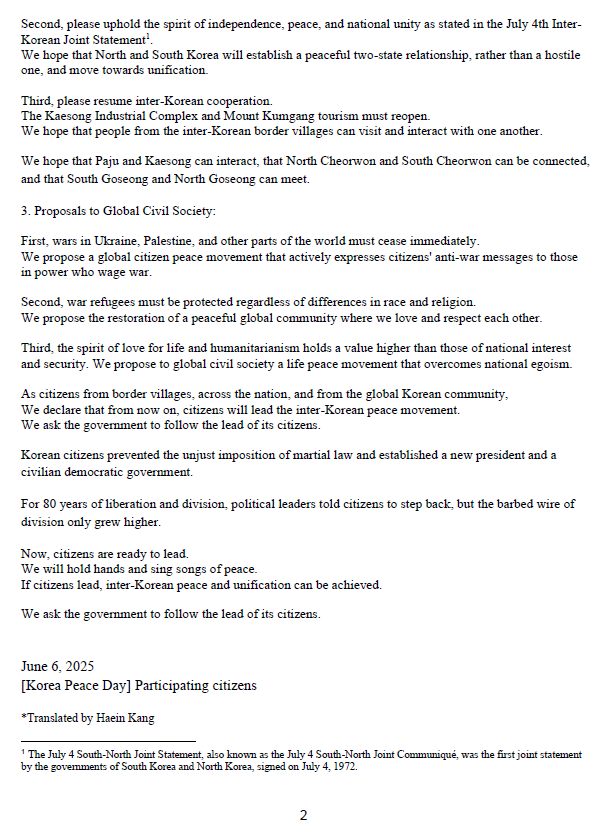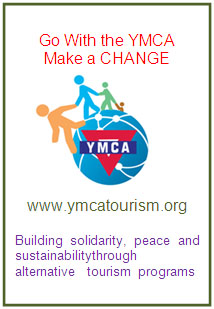2nd Korea Peace Day - Sing for Peace: End Hostility, Build Peace
Last Updated (Monday, 30 June 2025 13:34)
2nd Korea Peace Day - Sing for Peace: End Hostility, Build Peace
On June 6, 2025, more than 3,200 citizens gathered at Imjingak in Paju, South Korea, near the Demilitarized Zone (DMZ), to participate in the 2nd Korea Peace Day. Marking the 80th year since Korea’s liberation and division, the event brought together people across Korea─including the representatives from religious communities, artists, youth, and civil society─under the slogan: “Sing for Peace: End Hostility, Build Peace”.
Joining in solidarity for Just World, GS Nam Boo Won and Yura Rhee from Asia Pacific YMCA -APAY also attended the event, showing the support for citizen-led peace initiatives on the Korean Peninsula. It was meaningful to highlight the shared hope for peace not only within Korea but across the wider Asia-Pacific region.
Singing for Peace
At the heart of the event was a large-scale peace concert featuring choirs, traditional music groups, and youth orchestras from across Korea. Among the performers were choir and orchestra from local YMCAs. The concert culminated in a powerful moment when citizens held hands to form a symbolic human chain for peace, followed by the public declaration of a shared vision for peaceful inter-Korean reconciliation
One standout performance was the youth-led “Reaching Peace” busking show, performed by young musicians, singers, and rappers from both South and North Korean backgrounds. Nearly 500 people enjoyed this show, amplifying the youth’s heartfelt messages of hope and unity.
Peace Pilgrimage by Land and Sea
In the two weeks leading up to the Peace Day, two peace pilgrimages set out from the opposite corners of South Korea with the goal of converging at Imjingak on June 6.
The land pilgrimage, covering 385 kilometers along the DMZ, began in Goseong and included religious leaders from Christianity, Buddhism, Confucianism, and Korea’s native faith traditions. Their walk symbolized a journey of healing and solidarity.
Meanwhile, a sea pilgrimage departed from Jeju Island─the southernmost point of Korea─on a 700-kilomemter sailing voyage aboard the non-motorized yacht Jonah Wale. Despite severe wind conditions, mechanical issues, and even an entanglement with a fishing net that led to a ship change, the crew persisted on the peace sailing pilgrimage. Their arrival for the Peace Day celebrations was a powerful testament to resilience and dedication to peace.
The release of Peace Statement
The 2025 Korean People’s Peace Statement was released from this event and the essence is as follows:
- We, citizens gathered in Paju, called upon President Lee Jae-myung for pragmatic peace policies for the peaceful lives of 80 million Koreans, North and South.
- We urged the leaders of both Koreas to meet unconditionally.
- We requested the UN, international organizations, and global civil society to take action to end the wars in Palestine and Ukraine.
(See the full statement at the bottom)
Building a Culture of Peace for Citizen-Led Future
This year’s event built on the legacy of citizen-led peace movements, including the inaugural Korea Peace Day in Cheorwon in 2024, and earlier efforts such as the “DMZ Holding Hands: Spring Picnic to the DMZ” in April 2017. That event, which had approximately 200,000 citizens joining hands across DMZ bordering cities to advocate for peaceful reunification, was put on hold during the Covid-19 pandemic but re-emerged as Korea Peace Day.
Organized by the Border Peace School and other grassroots networks, the initiative seeks to create engaging peace culture rooted in citizen participation, especially in DMZ-adjacent regions. The next Korea Peace Day will be held in Yeoncheon in 2026, envisioning over 100,000 participants.
By Yura Rhee, Junior Executive Secretary, APAY
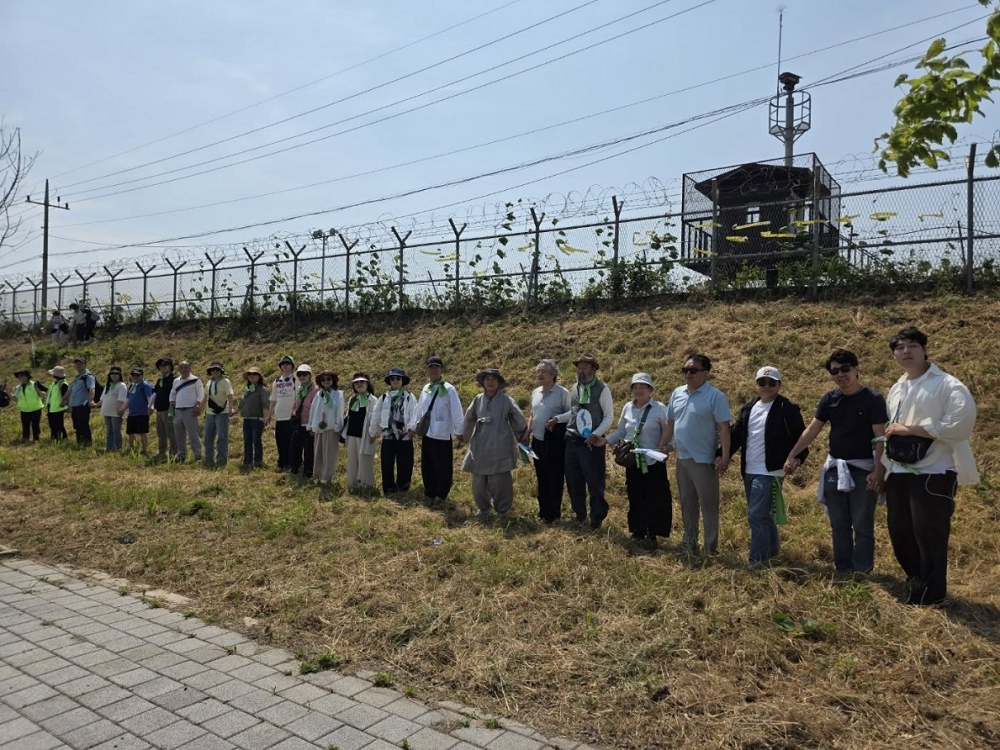 | 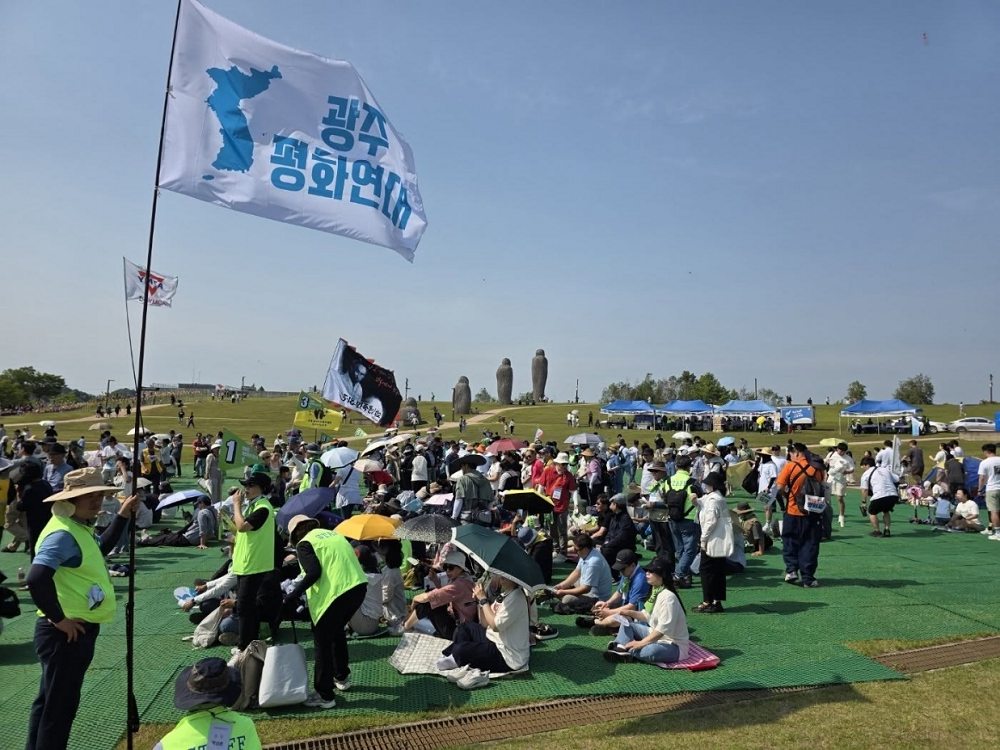 |
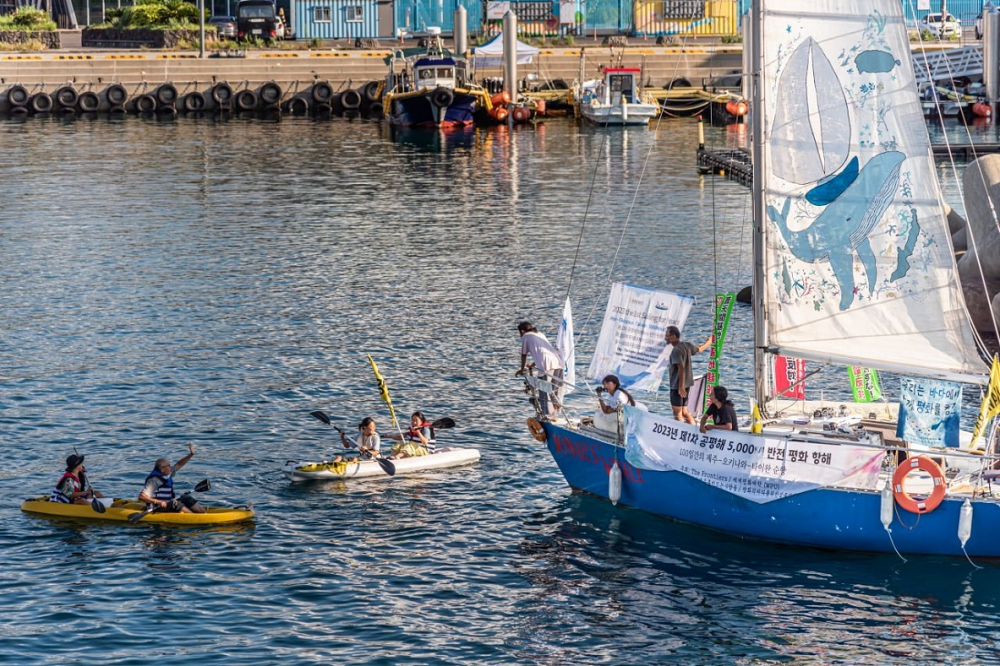 |  |
